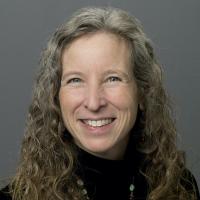
UC Davis' Alyssa Panitch Develops Protective Therapies for Osteoarthritis and Vascular Conditions
Quick Summary
- Mimetic substances developed in the Panitch lab protect tissue from inflammation-causing enzymes

UC Davis biomedical engineering (BME) professor Alyssa Panitch seeks to prevent our bodies from getting in their own way when we’re healing wounds.
“Our immune system is designed to fight infection and deal with tissue damage. We have an immune system that targets specific pathogens with antibodies. We also have a nonspecific immune system that creates inflammation and scar tissue,” Panitch says.
Inflammation has its place and protects us from many disease-causing organisms and helps with tissue healing. However, too much inflammation and scar tissue can also contribute to serious health problems.
Mimetic Therapy for Osteoarthritis
Osteoarthritis, the cause of most disability claims in the United States, involves chronic, out-of-control inflammation through the release of enzymes that break down and degrade tissue. Unfortunately, medicine currently used to treat osteoarthritis only addresses the pain, not the underlying condition. Panitch’s lab is developing therapeutics to slow or stop the vicious cycle that aggravates inflammation in the joints of people with osteoarthritis, allowing the body’s natural repair processes to heal the damaged tissue.
The solution is a mimetic—a synthetic substance that binds to joint tissue to coat and protect it from destructive enzymes. When injected into the affected area, the treatment stays localized and doesn’t interfere with legitimate protective work of the nonspecific immune system elsewhere in the body.
Panitch relies on mimetics because the natural cells that produce protective substances in the body can not make the substance quickly enough. “It’s hard to keep the cells alive long enough to produce meaningful quantities of therapeutics,” she says. Also, rather than producing the complete protein (aggrecan), it is cheaper and easier to synthesize polymers that mimic a therapeutic function.
Applications for Angioplasty Patients
Her lab’s mimetics could prevent the narrowing of blood vessels in patients who receive balloon angioplasties. Angioplasty can open up pathways for blood to flow through vessels blocked by plaque, but the process causes damage to the inside of blood vessels. Patients must take medicine afterward to prevent blood clotting and may need a metal stent, which requires even longer use of the platelet inhibitors.
However, the body naturally sends inflammatory cells to heal the blood vessel damage, this thickens the blood vessel walls and shrinks the area that allows blood to flow, thus negating the benefits of balloon angioplasty. Panitch’s lab designs molecules to bind to the walls of the affected blood vessel to stop the inflammatory cells from thickening the blood vessel walls.
“These molecules aren’t 100 percent perfect. Some inflammation still occurs, but there is a reduction. So you get enough inflammation to stimulate healing, but not enough to create scar tissue that could block blood flow,” says Panitch. The treatment could also prevent strokes caused by blood clots and damaged blood vessels.
Some of these molecules are being tested in human trials. The osteoarthritis and vascular applications of the mimetic therapy could be approved for clinical use in as little as five years.
University Resources for Research
UC Davis offers a biomedical department, a world-class medical school, and a top-ranked veterinary school. Panitch appreciates the proximity to proteomics and genomics researchers that allows her team to perform basic research while collaborating with veterinarians and clinicians.”
She’s impressed by the dedication and skills of the graduate students who come to work in the lab. “The quality of UC Davis’ graduate students is second to none.”
